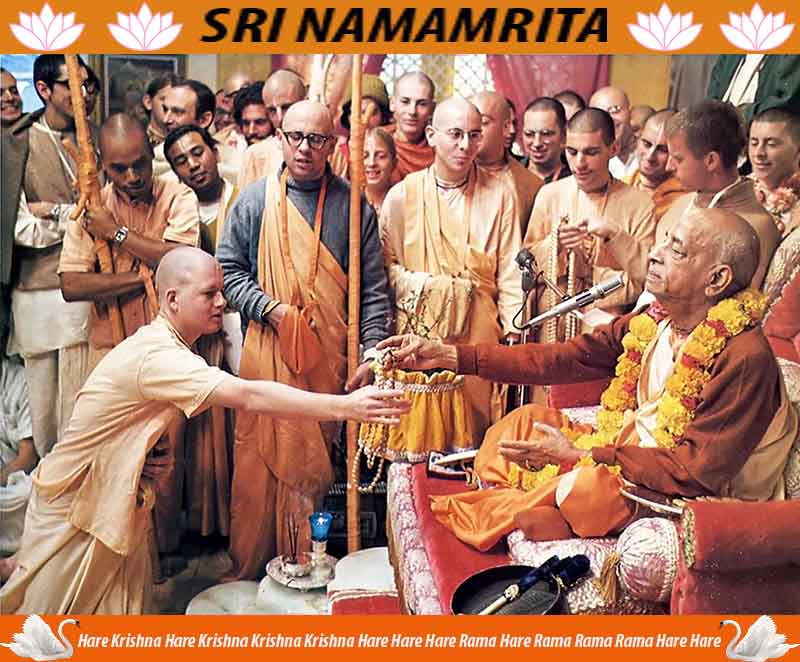
Because in this age it is not always possible to find a secluded place, hari−nama sankirtana is more practical than the yoga system:
In India there are sacred places where yogis go to meditate in solitude, as prescribed in Bhagavad−gita. Traditionally, yoga cannot be executed in a public place, but insofar as kirtana−mantra−yoga, or the yoga of chanting the Hare Krsna mantra: Hare Krsna, Hare Krsna, Krsna Krsna, Hare Hare/ Hare Rama, Hare Rama, Rama Rama, Hare Hare−is concerned, the more people present, the better. When Lord Caitanya Mahaprabhu was performing kirtana in India some five hundred years ago, He organized in each group sixteen persons to lead the chanting, and thousands of persons chanted with them. This participation in kirtana, in the public chanting of the names and glories of God, is very possible and is actually easy in this age; but as far as the meditational process of yoga is concerned, that is very difficult. It is specifically stated in Bhagavad−gita that to perform meditational yoga one should go to a secluded and holy place. In other words, it is necessary to leave home. In this age of overpopulation it is not always possible to find a secluded place, but this is not necessary in bhakti−yoga. In the bhakti−yoga system there are nine different processes: hearing, chanting, remembering, serving, worshiping the Deity in the temple, praying, carrying out orders, serving Krsna as a friend and sacrificing for Him. Out of these, sravanam kirtanam, hearing and chanting, are considered the most important. At a public kirtana one person can chant Hare Krsna, Hare Krsna, Krsna Krsna, Hare Hare/ Hare Rama, Hare Rama, Rama Rama, Hare Hare, while a group listens, and at the end of the mantra, the group can respond, and in this way there is a reciprocation of hearing and chanting. This can easily be performed in one's own home, with a small group of friends or with many people in a large public place.
One may attempt to practice meditational yoga in a large city or in a society, but one must understand that this is one's own concoction and is not the method recommended in Bhagavad−gita.
¯The Perfection of Yoga
Self−purification is more effectively attained by chanting the maha−mantra than by the yoga system:
[In practicing the yoga system]
one must be always undisturbed. If the mind is agitated, or if there is a great deal of activity going on, one will not be able to concentrate. In meditational yoga one must also be devoid of fear. There is no question of fear when one enters spiritual life. And one must also be brahmacari, completely free from sex life. Nor can there be any demands on one meditating in this way. When there are no demands, and one executes this system properly, then he can control his mind. After one has met all the requirements for meditation, he must transfer his whole thought to Krsna or Visnu. It is not that one is to transfer his thoughts to vacancy.
Thus Krsna says that one absorbed in the meditational yoga system is "always thinking of Me." The yogi obviously has to go through a great deal of difficulty to purify the atma (mind, body and soul), but it is a fact that this can be done most effectively in this age simply by the chanting of Hare Krsna, Hare Krsna, Krsna Krsna, Hare Hare/ Hare Rama, Hare Rama, Rama Rama, Hare Hare. Why is this? Because this transcendental sound vibration is nondifferent from Him. When we chant His name with devotion, then Krsna is with us, and Sri Namamrta: The Nectar of The Holy Name when Krsna is with us, then what is the possibility of remaining impure? Consequently, one absorbed in Krsna consciousness, in chanting the names of Krsna and serving Him always, receives the benefit of the highest form of yoga. The advantage is that he doesn't have to take all the trouble of the meditational process. That is the beauty of Krsna consciousness.
¯The Perfection of Yoga